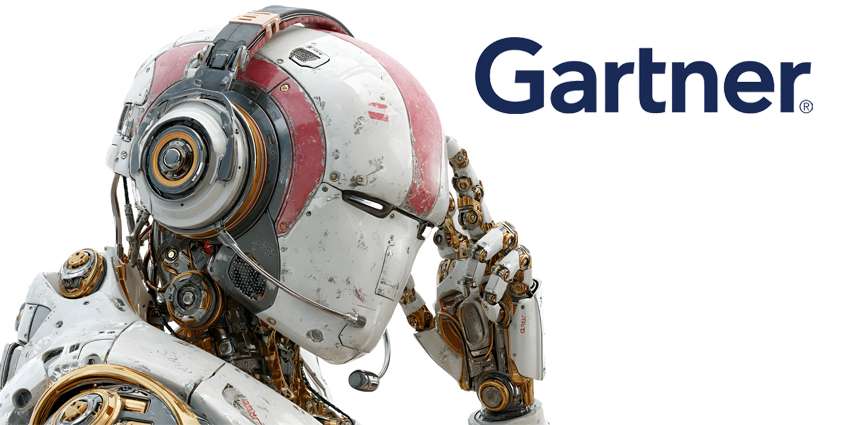Demand for enterprise workflow automation solutions has increased drastically in recent years. The rise of cloud technology, remote and hybrid work, and advanced AI algorithms have produced powerful tools for empowering teams.
By 2030, experts predict the workflow automation market will reach $78 billion as companies search for better ways to boost productivity and efficiency. In the contact center, workflow automation tools are becoming more adept at supporting employees and customers.
Used correctly, they can reduce business operational costs, improve customer satisfaction, and create more engaged teams. Today, we’re looking at some of the biggest trends in enterprise workflow automation worth watching in the year ahead.
1. Demand for Enterprise Workflow Automation Increases
A Salesforce study found that 95% of IT and engineering leaders prioritize workflow automation to boost productivity and strengthen customer experience. Increasingly, enterprise workflow automation is becoming less of a nice-to-have investment and more of a strategic priority.
This is particularly true in the contact center, where customer expectations evolve. Consumers want faster, more personalized, and more convenient experiences across every channel. Workflow automation tools ensure teams can offer robust omnichannel experiences and reduce average handling times with unified access to data.
Additionally, these tools can help companies improve compliance by making it easier to manage sensitive data and track potential security issues. This is crucial when regulations are becoming stricter in the contact center.
2. AI and Machine Learning Enhances Functionality
Artificial intelligence influences virtually every aspect of the modern contact center, paving the way for improved business insights and enhanced customer service. New forms of AI also lead to innovations in enterprise workflow automation.
Companies can now automate simple customer interactions using AI solutions, with generative AI bots capable of responding to consumers in a human style. Teams can automate the creation of content and follow-up messages for interactions and even automatically access insights into customer sentiment and intent in real time.
AI and machine learning tools can help companies gradually optimize workflows over time, creating more intelligent routing strategies or solutions for customer data management.
3. Hyperautomation in Enterprise Workflow Automation
As tools for enterprise workflow automation become more advanced, hyper-automation is gaining increased attention. Hyperautomation goes beyond the basics of simply automating repetitive workflows and mundane tasks.
It allows companies to combine robotic process automation, machine learning, and artificial intelligence in a way that augments human workers. For instance, CCaaS companies are using hyper-automation to create virtual assistants that can listen to conversations and intervene to provide real-time assistance to employees.
Hyperautomation allows companies to combine decision-making, data analysis, customer insights, and real-time augmentation to deliver transformative results. With this strategy, companies can expedite and scale manual tasks, reduce errors, and improve operational efficiency.
4. Greater Flexibility and Customization
Today’s contact center agents deploy various tools to ensure they can deliver powerful experiences to customers. Alongside CCaaS platforms, businesses embrace workforce engagement tools, UCaaS solutions, and CRM systems.
More flexible enterprise workflow automation technologies ensure companies can customize and align their technology stack. Companies can connect various solutions in a workflow using APIs, bringing together numerous tools and different data forms.
In some cases, some users can even build personalized workflow automation strategies based on their specific needs. These integrations make it easier for employees to leverage the data and insights they need to deliver more customized experiences to customers.
5. Low-Code and No-Code Technology
In the past, implementing enterprise workflow automation tools in a workplace could be complex. Business leaders needed to work with specialist coders and developers to create solutions that integrated with their technology stack and drove the right results.
Workflow automation technology is becoming more accessible, customizable, and straightforward. Companies are embedding workflow automation solutions natively into CCaaS, UCaaS, and CRM tools. Additionally, innovators in the market are providing access to no-code and low-code automation workflow builders.
These solutions allow any employee, regardless of technical knowledge, to create automated workflows. This paves the way for a new business environment where every staff member can leverage the benefits of AI and automation with templates and simple connectors.
6. Automation as a Service
While no-code and low-code platforms make it easier for citizen developers and everyday employees to access enterprise workflow automation tools, there are some caveats. Some companies need specialist solutions to ensure they can continue to use legacy tools or stay compliant.
Automation-as-a-service, one of the latest trends in the “as-a-service” landscape, offers a potential solution. Vendors in the technology work can work with business leaders to create on-demand, tailored automation services. This makes it easier to customize and align automation tools based on the company’s specific needs.
Leaders in the contact center landscape can provide access to experts or partners who offer tailored solutions to every business, no matter their industry.
Enterprise Workflow Automation Transforms Contact Centers
Automation is more than just a trend in the contact center landscape. It’s becoming an increasingly crucial tool for businesses investing in next-level customer experience. 80% of customers now say the experience a company provides is just as important as its products or services.
With automation tools, companies can reduce workflow bottlenecks, improve employee engagement, and deliver more advanced customer experiences. Plus, they can save money on operational costs and pave the way for rapid transformation.
As automation solutions become more advanced, accessible, and customizable, the demand for these technologies will only grow. It’s safe to say automation has a critical role to play in the future of the contact center.







